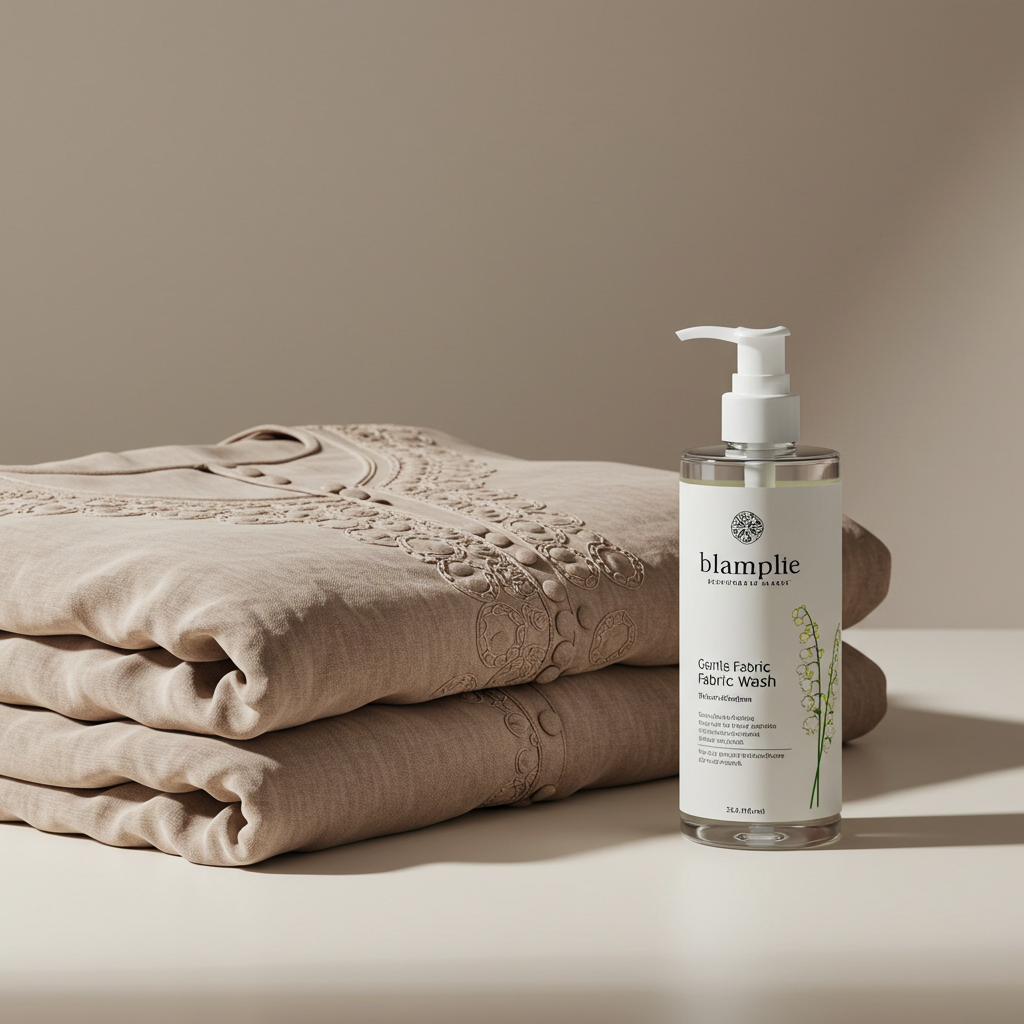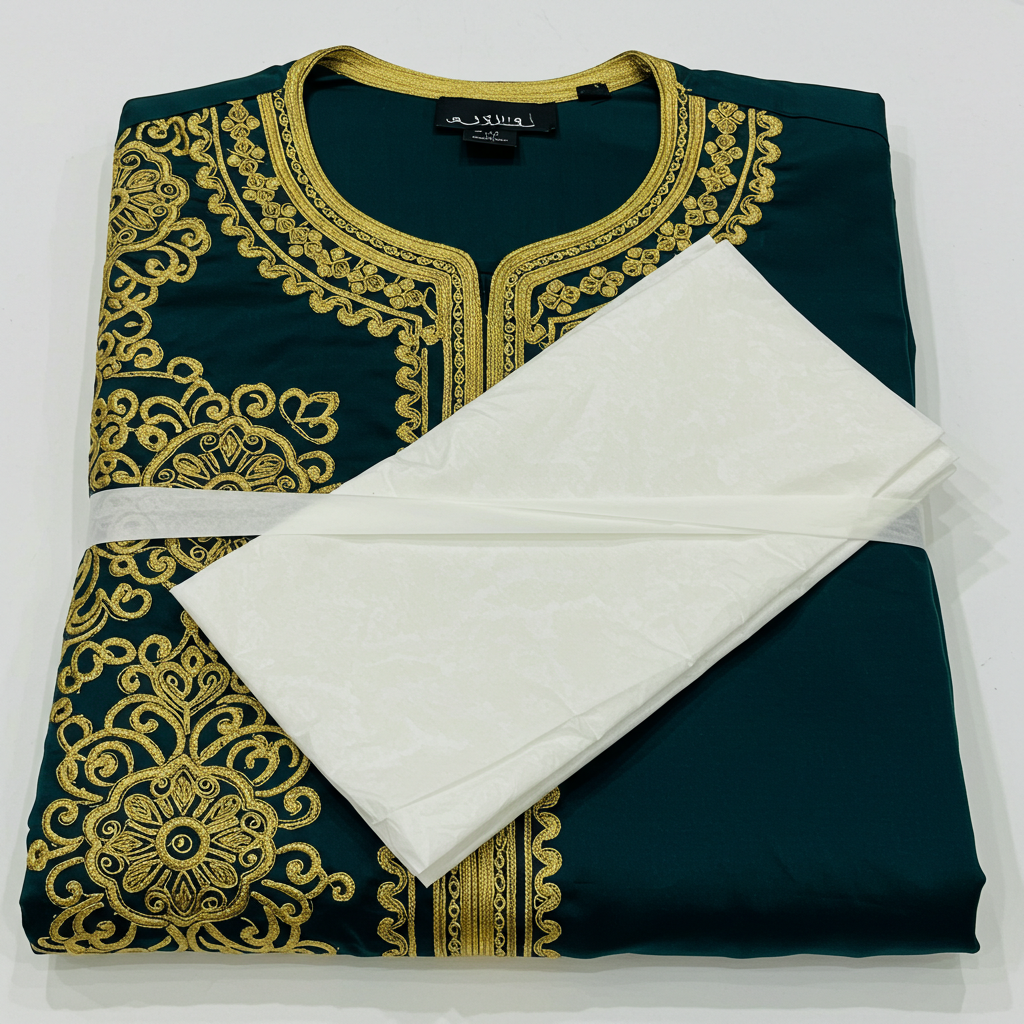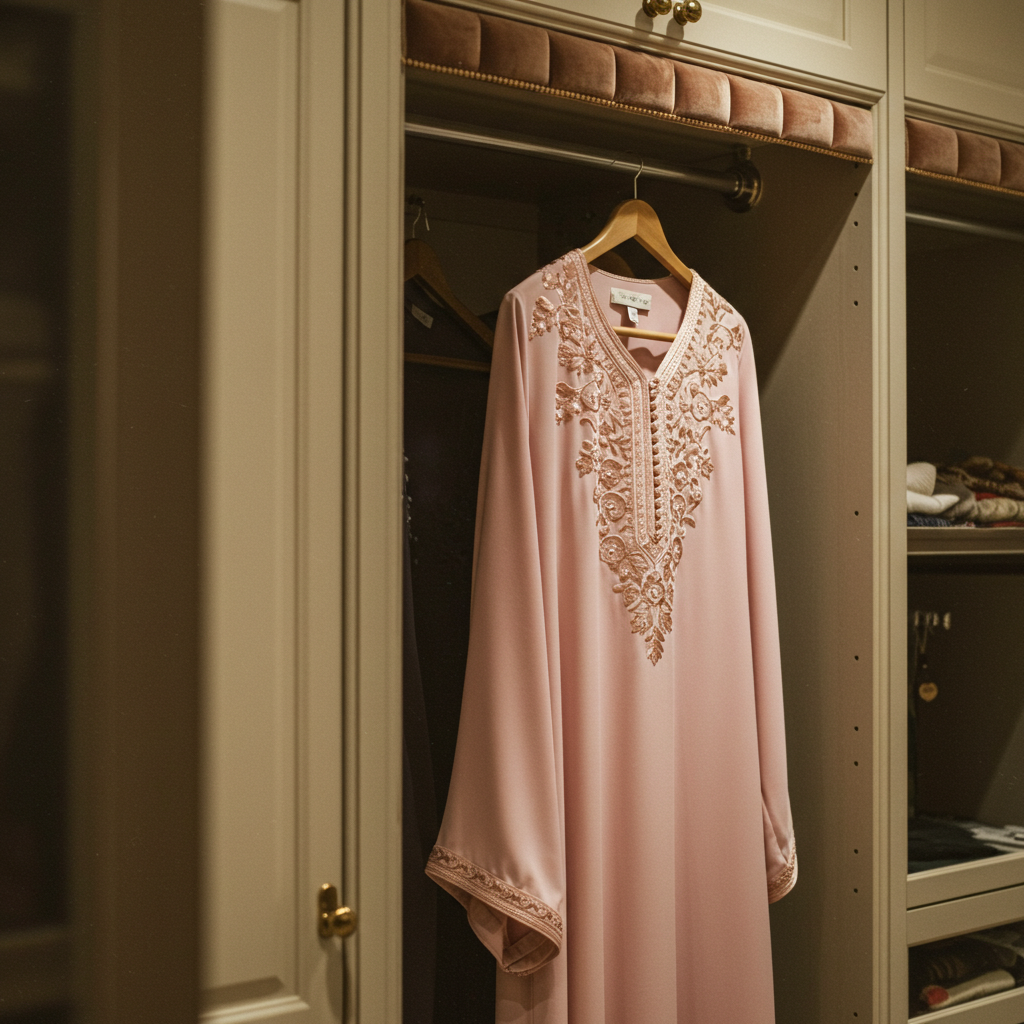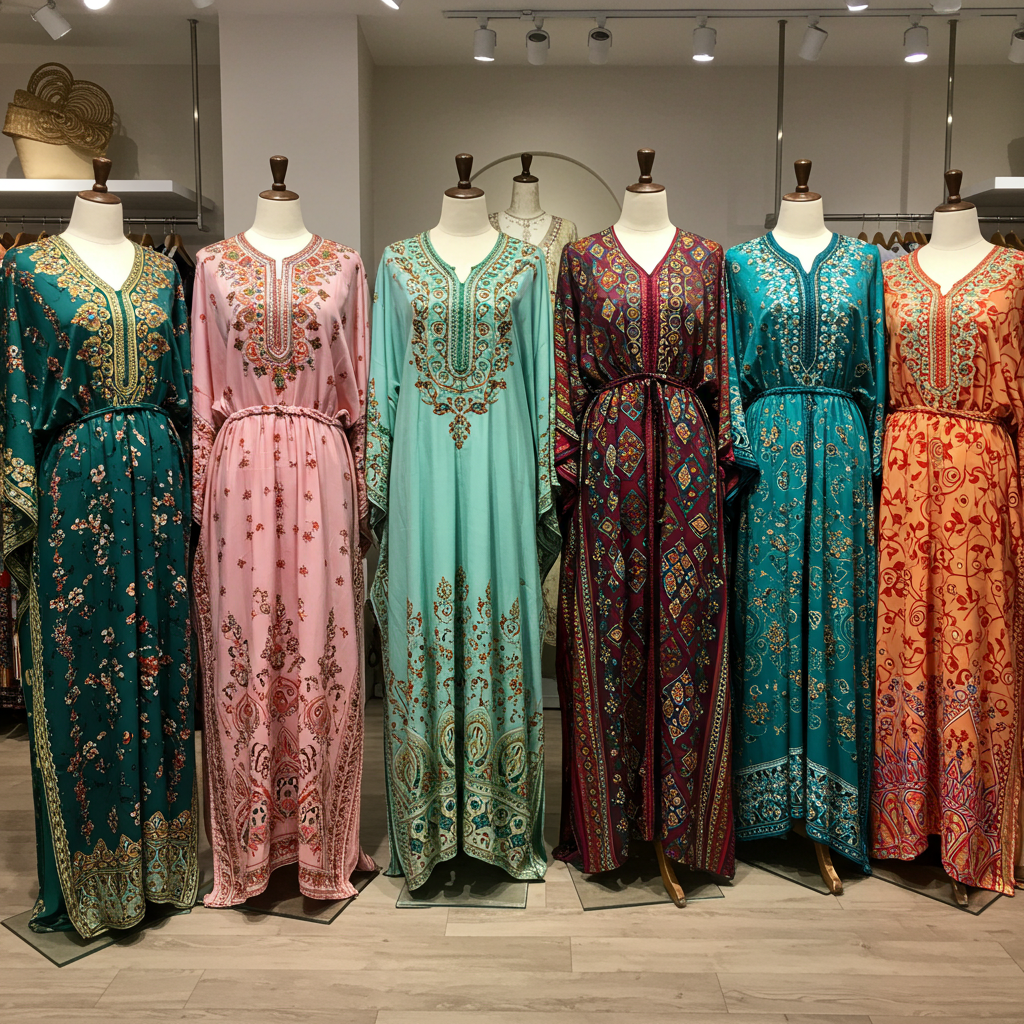Your cart is currently empty!
Kaftans and embroidered garments are more than just beautiful—they’re delicate and meaningful. Whether it’s a hand-stitched Palestinian thawb or an embellished Moroccan kaftan, proper storage helps preserve their elegance and protect them for years to come.
Step 1: Clean Before You Store
Always wash or dry clean your kaftan or embroidered garment before storing it.
Stains, sweat, or even perfume can damage fabric over time if not cleaned properly. For heavily embellished or delicate items, dry cleaning is the safest choice.

Step 2: Fold Embroidered Pieces with Care
Avoid hanging heavy embroidered garments, as the weight can stretch the fabric.
Instead, gently fold them and place tissue paper between embroidered sections to prevent friction and fading.

Step 3: Hang Light Kaftans on Padded Hangers
Lighter, unembellished kaftans can be hung in your closet.
Use a padded or velvet hanger to prevent slipping and distortion at the shoulders. Avoid wire hangers—they can leave marks or misshape the neckline.

Step 4: Use Breathable Garment Bags
Never store kaftans or embroidered garments in plastic.
Plastic traps moisture and may cause yellowing or mildew. Instead, use a breathable cotton garment bag to protect your clothing from dust and light.

Step 5: Keep in a Cool, Dry Place
Avoid storing your pieces in areas with high heat or humidity.
Choose a cool, dry closet or drawer, and never keep your garments near direct sunlight, which can fade delicate embroidery and fabric over time.
Bonus Tip: Rotate Your Favorites
If you have a few kaftans or thawbs for special occasions, rotate them every few months.
This helps avoid creasing in the same areas and gives your garments time to breathe.
Final Thought
Storing your kaftans and embroidered garments properly keeps them looking fresh and beautiful. With just a little extra care, your cultural pieces will last for many Eids, weddings, and celebrations to come.


Leave a Reply